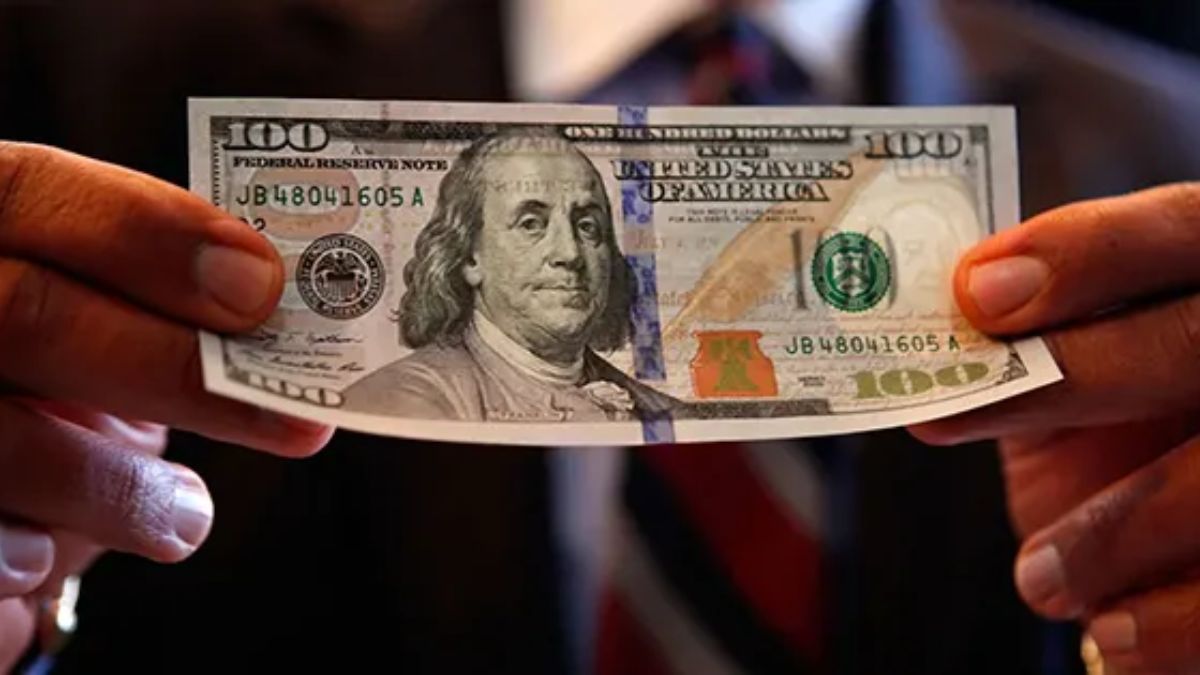Removing the $100: In today’s digital age, the way we handle money is rapidly evolving. According to the Federal Reserve Bank, about 60 percent of financial transactions in the United States are now conducted using either debit or credit cards. This shift towards electronic payments has sparked a heated debate about the future of cash, particularly high-denomination banknotes like the $100 bill.
The Dominance of Card Transactions
The prevalence of card transactions reflects a significant change in consumer behavior. With the convenience and security offered by debit and credit cards, it’s no surprise that they have become the preferred method of payment for many Americans. Cash, while still widely used, has been relegated to the position of third most popular payment method in the United States.
Cash Usage: A Closer Look
Despite the rise of electronic payments, the use of banknotes in circulation has remained relatively stable in recent years. This persistence of cash raises questions about its role in the modern economy and society.
The Controversy Surrounding the $100 Bill
Harvard Professor’s Perspective
Kenneth Rogoff, a Harvard University economics professor and chess Grandmaster, has been a vocal advocate for withdrawing the $100 banknote from circulation. His research has led to some startling conclusions:
1. More than half of $100 bills are held overseas.
2. In 2022, there were enough $100 bills for every American to have 55 of them in their wallets.
Rogoff argues that most $100 notes are used for illicit purposes and contribute to the global underground economy. He views all fiat paper money as a hindrance to effective monetary policy.
The “Super Note” Threat
The $100 bill is not just a matter of economic policy; it’s also a security concern. North Korea is known to have produced high-quality counterfeit $100 bills, dubbed “super notes.” This threat of counterfeiting adds another layer to the debate about the future of high-denomination banknotes.
The Psychology of Spending: The Denomination Effect
Understanding Consumer Behavior
The “denomination effect” is a fascinating psychological phenomenon that influences how people spend money. This cognitive bias suggests that individuals are less likely to spend larger currency denominations compared to the same value in smaller denominations.
Research Findings
Helen Colby, an Assistant Professor of Marketing at Indiana University’s Kelley School of Business, conducted a study on this effect. Her research found that college students were less willing to make purchases when given a $100 bill compared to five $20 bills. Colby explains this behavior by noting that spending a $100 bill feels more significant because it “essentially destroys” the bill, whereas using a credit card allows you to retain the card after the transaction.
The Lifespan of Banknotes
An interesting aspect of the currency debate is the lifespan of different denominations:
- $100 bills typically remain in circulation for over a decade.
- Lower denominations like $1 and $5 bills usually wear out within 18 months.
This durability of high-denomination notes adds another dimension to the discussion about their utility and environmental impact.
Arguments for Keeping High-Denomination Banknotes
While there are strong arguments for phasing out high-denomination notes, there are also reasons to consider keeping them:
1. Privacy: Cash transactions offer a level of privacy that electronic payments cannot match.
2. Financial Inclusion: Not everyone has access to banking services or electronic payment methods.
3. Emergency Preparedness: In times of crisis or natural disasters, cash can be a crucial fallback option.
4. Cultural Significance: For many, cash holds cultural and historical importance.
The Case for Even Higher Denominations
Interestingly, some argue that instead of eliminating the $100 bill, we should consider reviving even higher denominations, such as the $500 note. Proponents of this idea suggest that it could:
1. Reduce the cost of cash handling for businesses and banks.
2. Make large transactions more convenient for legitimate purposes.
3. Potentially decrease the total number of bills in circulation.
The Global Perspective
The debate over high-denomination banknotes is not unique to the United States. Many countries have grappled with similar issues:
- In 2016, India demonetized its 500 and 1000 rupee notes to combat corruption and counterfeit currency.
- The European Central Bank discontinued the €500 note in 2019 due to concerns about its use in illegal activities.
These international examples provide valuable insights into the potential impacts of removing high-value notes from circulation.
The Future of Currency: Finding a Balance
As we move forward, policymakers face the challenge of balancing various factors:
1. Technological Advancements: The rise of digital currencies and mobile payments continues to shape the financial landscape.
2. Security Concerns: Addressing counterfeiting and illicit use of high-denomination notes remains a priority.
3. Economic Considerations: The impact on monetary policy and the broader economy must be carefully evaluated.
4. Social Factors: Ensuring financial inclusion and respecting cultural attachments to cash are important considerations.
Conclusion
The debate over high-denomination banknotes, particularly the $100 bill, is complex and multifaceted. While electronic payments continue to dominate, cash still plays a significant role in our economy and society. The arguments for and against keeping high-value notes highlight the need for a nuanced approach to currency policy.
As we navigate this evolving landscape, it’s clear that any decisions regarding our currency system will have far-reaching implications. Whether we choose to phase out high-denomination notes, maintain the status quo, or even introduce higher denominations, the goal should be to create a financial system that is secure, efficient, and accessible to all.
The future of our currency will likely involve a blend of traditional and modern payment methods, reflecting the diverse needs and preferences of our society. As this debate continues, it’s crucial for policymakers, economists, and the public to engage in thoughtful discussion to shape a currency system that serves us well in the 21st century and beyond.







